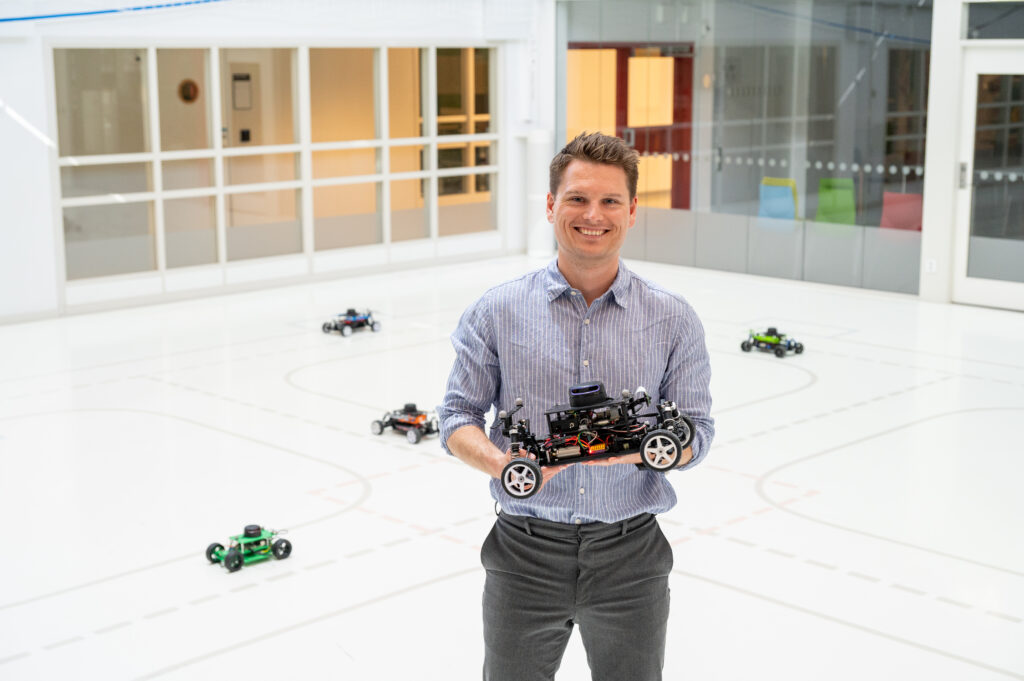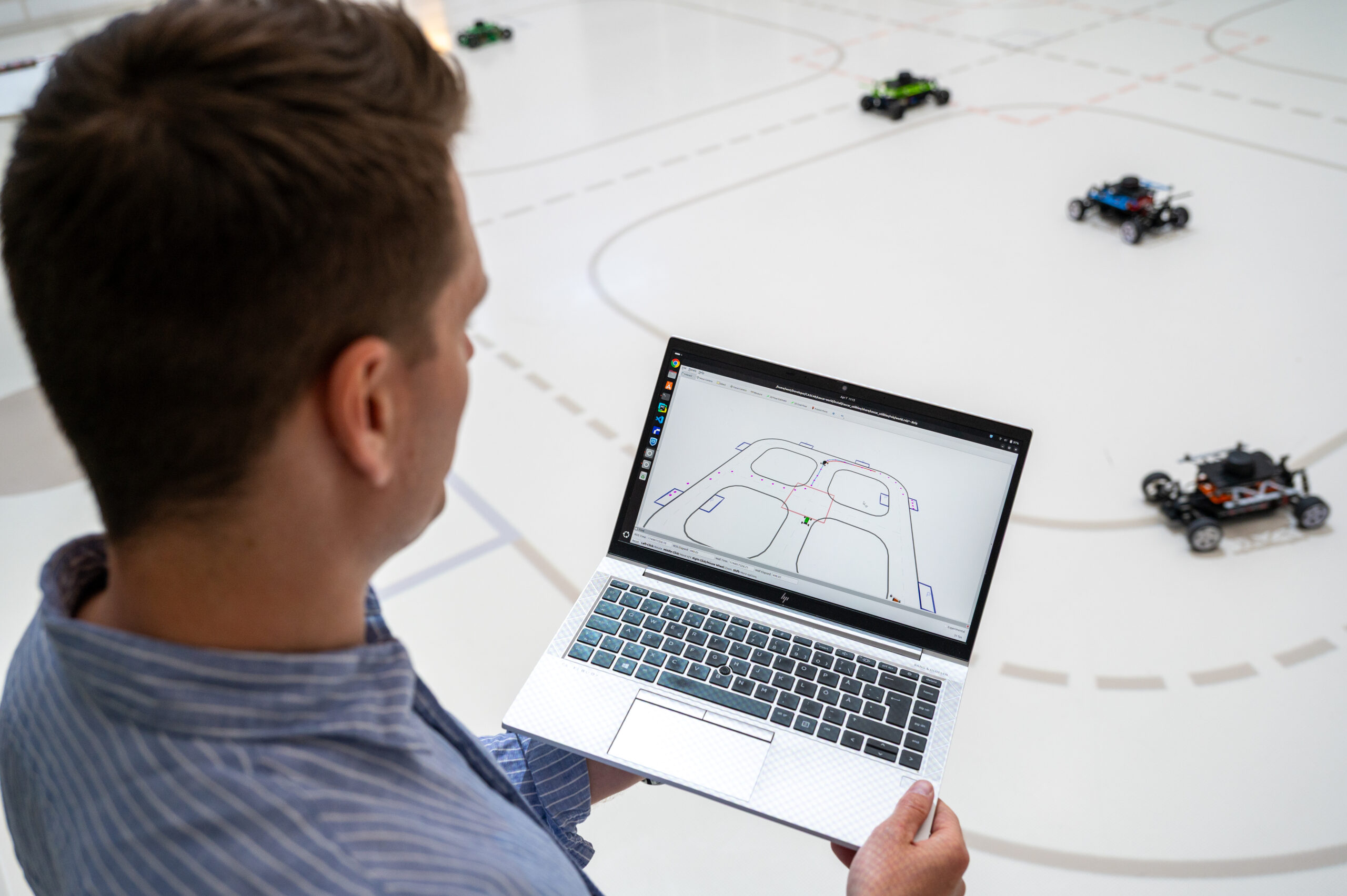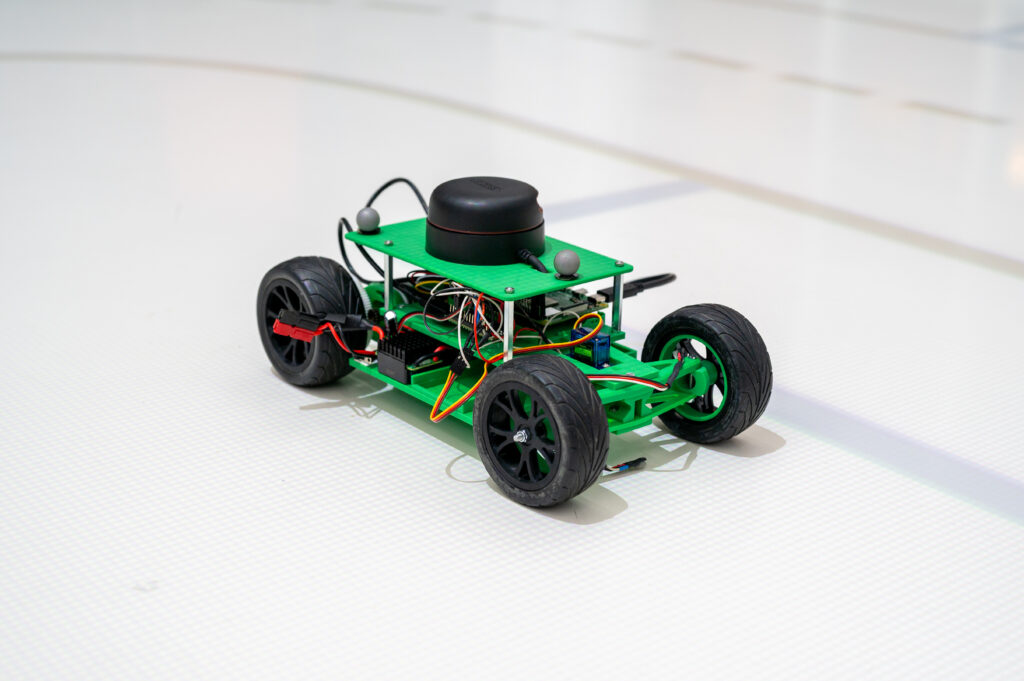As autonomous vehicles move from research concepts to real-world applications, bridging the gap between simulation and reality becomes essential. While simulations are powerful tools for testing algorithms and scenarios, they cannot fully capture the complexity of physical systems and real traffic environments. At Linköping University (LiU), with funding from ELLIIT, researchers and students have developed a sim-to-real platform that connects virtual models to real vehicles – creating a testbed that advances both research and education.

The platform
The platform enables researchers and students to test autonomous vehicle systems in both virtual and physical environments.
- Realistic simulation of vehicle motion and sensor behavior, including traffic signs, rules, and interactions with other vehicles.
- The same software runs in both simulation and reality, ensuring smooth transfer of algorithms.
- A modular architecture makes it possible to track errors and verify functionality – crucial for both education and industrial applications.
This combination allows safe, efficient development of new solutions that are validated in simulation before being tested in practice.

Impact on education
A key strength of the platform is its integration into LiU’s educational programs:
- Undergraduate level: In the course Autonomous Vehicles – Planning, Control and Learning Systems, students work directly with real vehicles, not just computer simulations. This hands-on approach helps them understand how theoretical algorithms behave under real-world constraints.
- Practical creativity: New 3D-printed vehicle models, tailored to course and research needs, give students the chance to design, test, and refine physical prototypes.
- Graduate level: PhD students use the platform to validate research models in real-world experiments, testing sensors and control systems beyond the boundaries of simulation.
By combining theory with hands-on experimentation, the platform prepares students for future careers in autonomous systems, both in academia and industry.
Research and industry relevance
Beyond education, the platform is a valuable resource for research and innovation. It provides opportunities for testing multi-vehicle interactions, traffic scenarios, and advanced sensor integration under controlled but realistic conditions. Its modular, industry-aligned design ensures that insights and technologies developed at LiU can be directly transferred to the automotive sector.
“There are many more simulators that are much more complex, but our platform is designed for the spaces we have – that is, Visionen. We have made the best use of this resource as possible.” – Theodor Westny, initiator and ELLIIT financed former researcher at the Department of Electrical Engineering (ISY) at Linköping University.
The role of ELLIIT
ELLIIT funding has been instrumental in building this infrastructure, making it possible to integrate research, education, and industry collaboration. Thanks to this support, LiU has created an environment where students and researchers can explore the future of autonomous systems, preparing the next generation of experts.
Looking ahead, the platform will expand with new features, including LiDAR sensors for higher realism, additional 3D-printed vehicles for project-based learning, and experiments involving multiple interacting vehicles – increasing complexity and bringing research and education even closer to reality.
Both the Visionen 2.0 infrastructure and Westny’s PhD position are primarily funded by ELLIIT.

